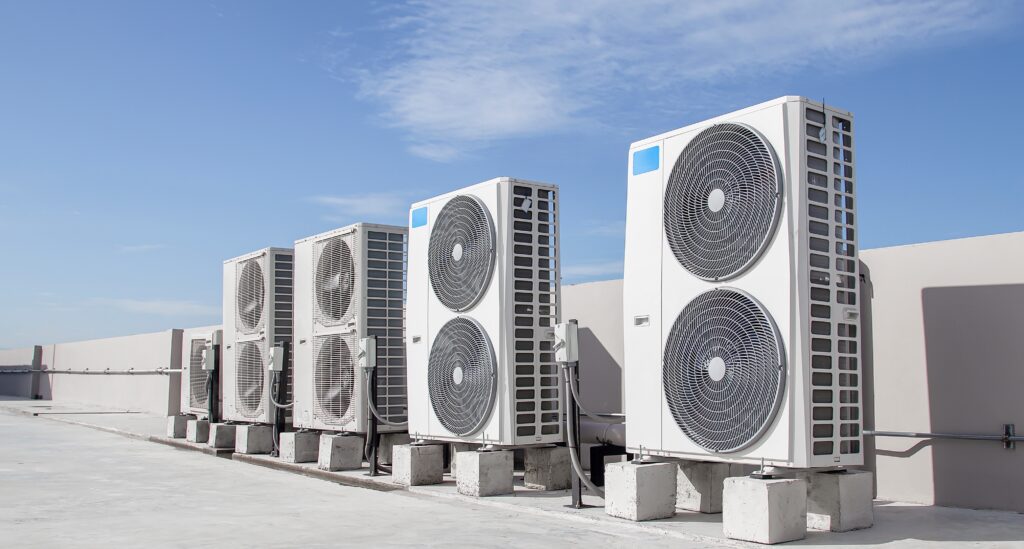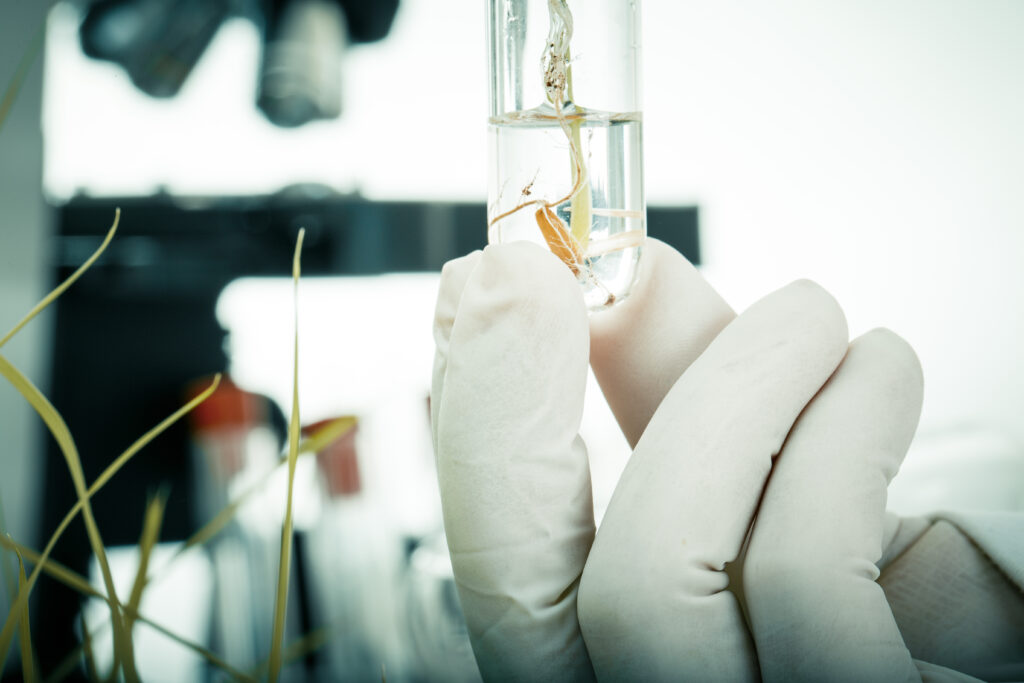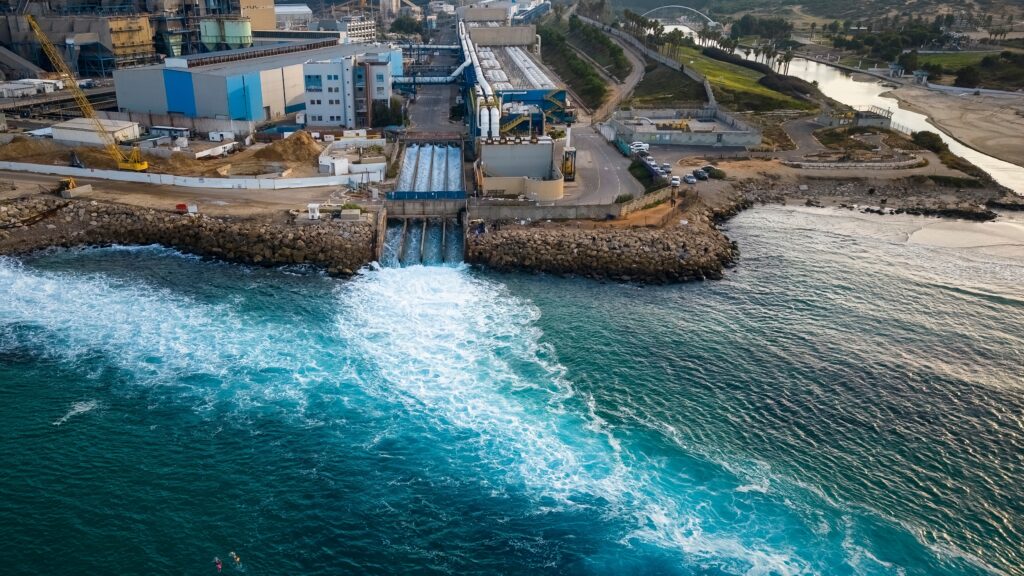09 November 2023 | Climate Tech
Apocalypse Later. Adaptation Now.
By
“A call for climate adaptation ventures.”
This article was contributed by Alex Laplaza, an advisor and former partner at early-stage climate tech venture fund Lowercarbon Capital.
Alex shares his perspective on why adaptation is a critical category, not just for governments and philanthropists to consider, but for venture investors, operators, and broadly, the climate-curious, to consider. I offered light revisions, additions, and suggestions.

Climate adaptation needs a rebrand.
Sea walls are probably what come to mind when most folks think of adaptation. It’s apt, because sea walls are representative of adaptation solutions more broadly: Necessary but underfunded, unimaginative, and supremely inadequate.
Beyond sea walls, adaptation — in all senses of the word and tech category — is no longer optional. Even if global emissions zeroed out tomorrow, the warming baked in by centuries of past emissions could still bring many climate systems dangerously close to cascading tipping points and feedback loops. This summer of biblical heat, fires, and floods points to a future present for which we’re unprepared. Hundreds of millions of people have already been pushed “outside the human climate niche,” which is a polite way of saying “so hot you die.” And this is just a 1.2ºC warmer world.
Yet, the collective movement and energy behind adaptive climate solutions has, to-date, been somewhat uninspiring. It’s no wonder, then, that the financing gap for adaptation is as high as $366B annually, an 18x shortfall and widening.
In parallel, decarbonization is accelerating faster than once expected. Future emissions projections are bending away from the most catastrophic global scenarios. Each sliver of each degree of warming shaved off prevents death, destruction, and suffering for millions worldwide. Progress on climate is proving not only possible but profitable.
In a similar vein, tens of billions of venture dollars are flowing into decarbonization, lured by promises of 1) industrial transformation, 2) strong unit economics buoyed by falling technology costs and rising regulatory schemes, and 3) strong near- and long-term demand for green solutions that are cheaper and / or better. In other words, decarbonization checks three boxes of venture investing tenets: 1) massive markets, 2) paradigm shifts, and 3) fast growth through highly motivated customers.
Knowing how necessary adaptation will become, the ensuant question is how to fund it. Can it satisfy the same criteria decarbonization does for venture investors?
“If decarbonization is the new industrialization, adaptation is the new modernization”
The global economy was built on top of a climate that no longer exists. The foundational destabilization of societal systems this fact introduces is hard to grok. Melted roads and runways are easy enough to appreciate. Harder to grapple with are the second-order and third-order effects when multiple breadbasket collapses, global trade bottlenecks, and months-long blackouts compound and impact the world’s largest industries. Energy, agriculture, manufacturing, healthcare, real estate, transportation – none of these industries are untouched by climate change.
The scale of technology invention, reinvention, and deployment needed to better withstand and adapt to impacts is equally mind-melting. If decarbonization is the new industrialization, adaptation is the new modernization. This will require a paradigmatic overhaul of infrastructure and of our politics and societies as a whole, touching immigration, healthcare, poverty alleviation, affordable housing, as well as questions surrounding environmental justice and reparations.
That’s part of why investors have written off adaptation as a problem for governments or philanthropy to solve. But that the need permeates all of society isn’t a reasonable excuse not to invest; it’s an opportunity to envision new technologies and solutions. And it doesn’t hurt that tens of billions of public funds are available with few private opportunities (so far) to choose from.
Markets can also help scale adaptation solutions more quickly. Given that climate change already shutters factories, chokes supply chains, weighs on GDP, solutions to all these problems should offer ripe markets, returns, and motivated customers, even if those customers place self-interest over ideology. Farmers don’t need to believe in climate change to be interested in protection from drought, pests, and wildfires. If self-interest scales decarbonization solutions, then self-interest can supercharge adaptive solutions, too.

Adaptation ⇄ Decarbonization
Climate tech investors often label adaptation as resignation. They shouldn’t. Adaptation is more than just adjustment to climate change; adaptation can also drive decarbonization. High-efficiency cooling cuts heat deaths and carbon dioxide emissions; wildfire management curbs destruction and nitrous oxide emissions releases; slashing food waste reduces food insecurity and methane emissions.
Conversely, the impact-emissions death spiral is already beginning: Vanishing rivers bottleneck the manufacturing of solar panels and batteries; drought and heat slash hydro and nuclear power only to be replaced by gas generation. Heatwaves push grids to the brink and send markets scrambling for more coal and diesel. Even our mildest decarbonization goals are likely out of reach without adaptation.
Moreover, footing the bill for decarbonization is a lot harder when the world is buffeted with hundreds of billions in climate damages each year. Take, for example, the tens of billions of dollars utilities like PG&E and SoCal Edison are paying for wildfire liabilities instead of grid decarbonization. And the longer we wait, the more expensive and less effective adaptation solutions become. Concurrently tackling adaptation and decarbonization is critical.
A brighter (and cooler) vision for the future
Over the past few years, I’ve worked with teams fighting fires, floods, desertification, heat, and drought. Now, I’m looking for the next generation of adaptation startups that will save lives and keep the world running. Read on and you’ll find the key areas I think are ripe for investment. As the risks continue to magnify, plenty of solutions deserve a closer look. This list is nowhere near comprehensive, and I (Alex) always appreciate being proven wrong and having my mind blown. So if I missed something, don’t be shy.
Heat
In simplest terms, more greenhouse gasses mean more heat, which means more extreme weather, both of which combined mean more death and destruction. Heatwaves already kill more people globally than any other natural disaster. Increasingly, major population hubs are being pushed past livability. The economic losses of heat alone will measure in the trillions, and the burden will fall overwhelmingly on developing economies. So, here are some ways to beat the heat.
Air conditioning
Air conditioning is a survival necessity in many places. The rise of AC in the 20th century cut deaths from extreme heat in the US by ~75%. An expected surge of AC units to 4.5 billion by 2050 will mostly come from emerging markets. That is great news for humanity. But power-hungry and leaky ACs could strain grids, supercharge emissions, and cost trillions in power bills and infrastructure build-out.

The world needs high-efficiency air conditioning and high-humidity performance, with low-GWP refrigerants and sticker prices. Easily manufacturable is essential, easily installable is ideal, and easily admired is a plus. For specifics, I like to use the Global Cooling Prize’s criteria.
Heat-resilient infrastructure
The built environment is melting. Literally. Our physical infrastructure–bridges, roads, airports, train tracks, powerlines–was built with outdated max temperatures in mind. Cement, asphalt, and steel reflect less sunlight and store more heat than natural land surfaces. Cars and AC units pile on more heat. All this pushes temperatures in urban areas as much as 12ºC (~21ºF) higher than neighboring vegetated areas – a death sentence during months-long heat waves. I’d love to see more creative business models and nimble solutions to green our cities, reflect sunlight, create shade, reduce waste heat, and increase airflow.
Cold chain
Cold chains are temperature-controlled supply chains that take ice cream from cow to cone or vaccines from lab to jab. They’re long and complex – and insufficient or inexistent cold chains are responsible for 15% of the world’s food waste and as much as 40% in humid conditions. Expanding and improving cold chains could feed an extra 950m annually while cutting megatons of emissions from wasted food and energy. The name of the game is high-efficiency, low-GWP refrigerants, and low sticker prices. There is also plenty of low-hanging fruit in cold chain planning, monitoring, and optimization.
Food
The remarkably predictable weather of the past 10,000 years gave rise to farming and, in turn, civilization and the modern world. Unpredictable weather now unleashes multiple mutually reinforcing impacts that threaten agriculture on a global scale. Meanwhile, production needs to increase by over 50% to feed 10 billion people by 2050. Doing this in a changing climate while also slashing emissions requires producing more of some foods, less of others, and wasting much less of all.

Crop resilience
Extreme weather can wipe out breadbaskets in one fell swoop. Changing climates are shifting whole regions of crop suitability, and productivity growth will likely reverse well before mid-century. Fortunately, genetic engineering can boost staple crop resilience, nutrition, and resource efficiency by enhancing resistance to heat, drought, floods, and salinity. Considerable gains will come from enhancing a much wider array of seeds and plants than we currently do – everything from naturally climate-resilient crops like sorghum to the legumes in your favorite plant-based cheeseburger.
Valorizing otherwise wasted food
One-third of all food produced globally is wasted. Read that again. One. Third. While 1 in 10 people worldwide go undernourished, one billion tons of food per year are lost between farm and plate. Food waste squanders nearly one trillion dollars of value and mind-boggling amounts of capital. Losses emanate from each step and each player in long, complex supply chains intertwined across the globe. But therein lies the opportunity: any loss avoided is pure upside for businesses, food security, and the environment.
Controlled environmental agriculture
The Netherlands makes up less than 0.1% of the world’s farmland yet is the world’s #2 exporter of agricultural goods by value. The secret? Two decades of scaling controlled environment agriculture (CEA), a variety of farming systems from low-tech greenhouses to automated vertical farms. CEA offers a viable path to enhanced climate resilience for less robust produce like fruits and vegetables. As a huge fan of the giant nuclear reactor in the sky, I’m particularly interested in advanced greenhouses that benefit from free photons.
Aquaculture
The existence of gas station sushi makes it clear that the world can’t get enough fish. Wild-caught fish peaked in the 1990s, but aquaculture has since more than tripled and supplies a majority of fish protein today. Fish is now one-sixth of global animal protein, and aquaculture will need to more than double by 2050 to meet demand growth. Relative to other animal proteins, fish is resource-efficient (on par with poultry), but certainly not without its impacts. Doubling aquaculture’s output without doubling its land, water, feed, and biodiversity impacts requires drastic efficiency gains and feed innovations.
Cell ag feedstocks
Let’s consider how inefficient crop end-use is today. Only ~10% of all corn produced in the US is consumed by humans, and the remainder is used as fuel or animal feed. Cellular agriculture promises the same resource-intensive foods like meat, fish, cheese, and eggs with all the same indulgence but none of the animal inputs. But like our animal friends, microbes gotta eat! The feed conversion ratios are likely to be far superior to animal protein, but cell ag will need to improve feed efficiency and lower the footprint of its feedstocks to meet its promise of feeding a growing world more sustainably and ethically.
Water
Water is the medium through which most of the world will feel climate change directly, i.e.,either too much or too little. The tropics are growing wetter, fueling storms that destroy water and sanitation systems. The subtropics are growing dryer, stretching droughts from seasons to decades. And across latitudes, the lakes, dams, glaciers, and snowpacks that billions rely on are disappearing.
Agriculture and industrial water efficiency
Without efficiency gains, global water demand could exceed supply by 40% by the end of the decade. The primary culprits aren’t showers and sinks but food and factories. Agriculture and industry comprise 70% and 19% of global freshwater use, and while industrial water use in high-income countries has been steadily declining, it is quickly rising in industrializing countries.
Decarbonization and dietary shifts promise significant water efficiency gains, but more can be done. Even drip irrigation can squander 50% of water on manual, outdated, and inefficient equipment. Irrespective of sector or geography, every liter saved is a win for bottom lines, water security, and the environment.

Desalination
Today, 300 million people worldwide get their water from desalination plants. That figure is likely to balloon as water demand and scarcity grow. Turning saltwater into freshwater takes immense amounts of energy-intensive heat or pressure, and every liter of freshwater leaves behind 1.5 liters of concentrated brines and toxic chemicals, which are discharged back into the ocean, decimating sea life and squandering volumes of valuable minerals and chemical inputs. I’d love to see more efforts to make desalination grow closer to minimum energy use, more circular, and more renewables-friendly so that desalination buffers climate impacts rather than accelerating them.
Atmospheric water capture
Atmospheric water capture (AWC) is the extraction of potable water from ambient humidity. From low-tech fog collectors to high-tech hydropanels, pulling water from air could provide drinking water for a billion people globally without any surface water or groundwater depletion. Free potable water out of thin air could one day make AWC the cheapest form of water generation and promises to be a lifeline for communities facing water insecurity. The difficulty is affordability and profitability. Frankly, this one feels a bit like a wildcard – but those are the cards we love to play.
Disasters
If heat death, drought, and starvation don’t spook you, there’s a whole grab bag of other risks left in store. Small changes in global temperature make extreme tail-end events far more likely. Billion-dollar loss events used to occur once every 82 days. Now, they occur once every 18 days. Hundred-billion losses, once unthinkable, are commonplace. Adaptation means learning to live with extremes and unpredictability. This category covers solutions that can help withstand and bounce back from extreme weather.
Insurtech
Insurance access is often a signal of where to build and where not to, making it a powerful lever to move physical assets from vulnerability toward resiliency. The $6 trillion safety net under the global economy cost-effectively pools, transfers, and distributes risk. Yet, climate change jeopardizes the industry’s viability, obsoleting the past as a predictor of the future and racking up once unimaginable losses on insured assets. The need to adapt insurance models may be obvious, but the opportunity is still immense.
Traditional models cover actual losses incurred, leading to costly damage calculations that slow payouts. A newer model–parametric insurance–uses modeled losses to offer pre-determined payouts once certain trigger events occur. That means quicker, cheaper, and easier access to capital when time is most critical. A suite of emerging technologies–machine learning, remote sensing, robotics, and automation–can unlock the potential of parametric insurance and other novel models by improving underwriting and expanding products to the most vulnerable.
Wildfire management
Our best tools to protect forests are fires and axes. Heatwaves, drought, and decades of vegetation build up and fuel more frequent and intense wildfires. Prescribed fires or “controlled burns” reduce excess vegetation, replenish soils, and protect habitats and properties. Today, California and the US treat just ~1% of the acreage required because burns involve on-foot firefighters dripping and igniting diesel in vegetated areas.
Conventional methods are labor-intensive, expensive, dangerous, and feasible only when rare humidity and wind conditions coincide with dwindling firefighter availability. Similarly, mechanical vegetation removal is severely capacity and labor-constrained. I’d love to see more solutions that make controlled burns and forest thinning more scalable, low-cost, and safe.
Power grid ‘ruggedization’
Electricity grids are simultaneously one of humanity’s most impressive engineering feats and one of its most glaring weak spots. The safety of this critical infrastructure relies on thin wires strung across big sticks. It was designed for a climate that no longer exists. Today, grids face surging demand, increasingly intermittent supply, and frequent extreme weather. Further hamstringing grid upgrades are inflation, supply chain snarls, and an expected labor force halving. While there’s no shortage of attention on adapting grids to the challenges of decarbonization, there must also be more focus on adapting grids to the realities of a changing climate.
The net-net
Adaptation is about more than just crawling out of the hole we’ve dug for ourselves – it’s about climbing higher. Those footing most of the bill for climate impacts today are also the most vulnerable and, more often than not, the least responsible for warming. Technologies that enhance resilience can make life better for large swaths of humanity, whether climate change existed or not.
But it does exist, and there is no time to waste. This is an opportunity not just to save lives and stave off immense losses but to foster a healthier, more prosperous, more dignified existence for billions of people the world around. And that, more than anything, is why adaptation is worth it.